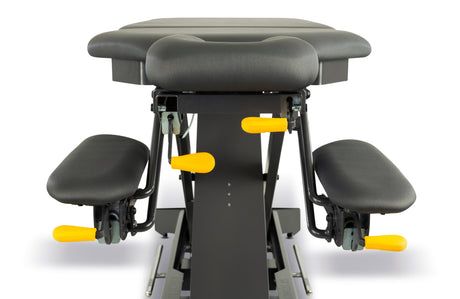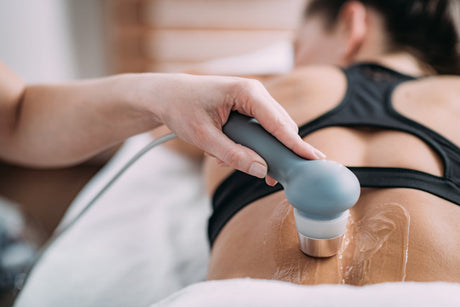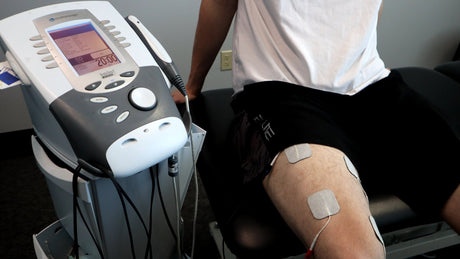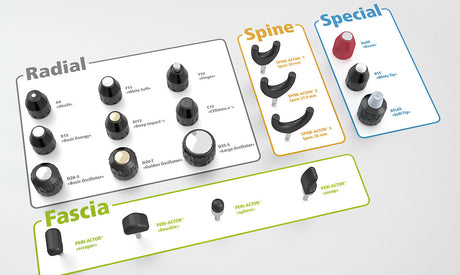What is The Bamboo Brace?
The Bamboo Brace is a specialized pediatric elbow brace designed to aid children in maintaining an extended position at the elbow during various activities. By promoting this extended position, the brace facilitates the performance, learning, and repetition of both gross and fine motor skills. While it provides control over the amount of elbow bending, its unique design also allows for a certain level of flexibility. Each Bamboo Brace, depending on the chosen size, comes equipped with 5 flexible and interchangeable support stays. These stays offer different levels of resistance, allowing you to select the one that best suits your desired needs. The Bamboo Brace is available in 5 different sizes, catering to children as young as 2-3 months old all the way through adulthood.
How do I know which size brace to order?
Please follow the sizing guides on each of the Bamboo Brace product pages.
How is this brace different than others on the market?
The market offers a wide range of elbow braces, but none quite match the uniqueness of The Bamboo Brace. While it may initially appear to be an elbow immobilizer, immobilization is not its primary function. The distinguishing feature of The Bamboo Brace lies in its five interchangeable plastic supports, known as “stays.” These stays differ in flexibility, ranging from one (most flexible) to five (most rigid). As a therapist or caregiver, you have the freedom to select the appropriate level of flexibility to achieve the desired outcome for the patient or loved one. Our main objective in designing this brace was to provide maximum elbow mobility and functionality while ensuring extension when not in use. In comparison to other braces on the market, The Bamboo Brace offers a snug fit under clothing, remains securely in place on the arm, can accommodate a growing child, and proves significantly more cost-effective than custom orthotics.
Who can benefit from The Bamboo Brace?
Any child who has a predominant flexion (bending) pattern at the elbow that is slowing motor development. Any child who is unable to bear weight through their arms or support themselves for crawling and other developmental motor activities. Any child with a progressive neurodegenerative disease. Any child who presents with spontaneous hand movements or incessant hand mouthing. Any child who has recently had surgery on the head, neck and face to keep them from removing sutures or bandages and damaging the surgical site.
A list of some common diagnoses and conditions for which The Bamboo Brace is helpful:
Cerebral Palsy, Rett Syndrome, Developmental Delay, Spinal Muscular Atrophy, Low muscle tone, Autism and Pervasive Development Disorder, Down Syndrome, Prader-Willi Syndrome, Post-surgical patients: cleft palate, plastics, ear/nose/throat, and dental, Sensory Processing, Disorder Brachial Plexus Injury
How The Bamboo Brace aids in learning motor skills?
With cases of flexor spasticity (bending) at the elbow, The Bamboo Brace allows children to learn how use the separate joints of the arm and trunk individually without as much interference from unhelpful elbow patterns. As children learn to control each joint separately their freedom of motion, strength, and function improves as well as their ability to bear weight through their arm(s). This makes activities like rolling, sitting, crawling, standing, and walking more possible. In children with low muscle tone, decreased strength or the inability to bear weight through their upper extremities on their own, The Bamboo Brace helps to provide the stability at the elbow joint. This stability is essential in weight bearing and the development of gross and fine motor skills as listed above.
What is Dynamic Elbow Bracing?
Dynamic elbow bracing is the motor therapy technique of placing a stiff, yet flexible enough brace on the arm to help improve elbow angles so that children with disabilities have an easier time learning and reaching motor milestones. In our treatment experience dynamic elbow bracing means that the brace is helping the elbow move in and out of positions along with the child being active in the process. If the movement process is active and dynamic this means the combination of the child and the brace working together produce functional results that matter. It may sound obvious, but the key is making sure the brace is ‘dynamic’ meaning that it can flex and bend to some degree and can be adjusted to the needs of the child. The opposite of course is a “static” brace that is placed around the elbow joint in a fully extended position and prevents any kind of movement or natural bending of the elbow. Static braces might help align the elbow for motor skill development, but they do not allow the child to repeat the necessary joint movement and muscle contractions to actually learn the movement.
Should The Bamboo Brace be worn over clothing or directly on the skin?
Although The Bamboo Brace can be worn over clothing, the non-slip surface on the inside of the brace is more effective when it is in direct contact with the child’s skin.
How tight should The Bamboo Brace be worn?
Once the stay area is in place wrap the brace around the arm and Velcro securely. The Bamboo Brace should be snug enough not slip up and down the arm but should not be so tight that circulation is impaired and there are color changes evident in the hand and fingers. Gaps should be minimal at the top and bottom ends by feeding through the excess material before adhering the Velcro.
Can The Bamboo Brace be used on both arms at the same time?
Yes. The Bamboo Brace is used both unilaterally (1 arm) and bilaterally (2 arms) and usually depends on the specific diagnosis and situation of each child. Children with spastic diplegia and quadriplegia Cerebral Palsy often use one Bamboo Brace on each arm during treatment and for periods during the day when they are working on motor skills that require the elbows to be more extended. It is also common for children who have lower muscle tone, muscle weakness and instability such as those with Down syndrome, Sensory Processing Disorder and other genetic and metabolic diagnoses to use The Bamboo Brace on both arms at the same time. The Bamboo Brace is also often used on both sides when children are healing from head, neck, facial and dental surgery or self-stimulate orally such as with Rett Syndrome.
How do I wash and care for The Bamboo Brace?
Do not machine wash or machine dry The Bamboo Brace. We recommend that you hand wash your Bamboo Brace with the stay removed in warm water and mild soap. Be sure to rinse thoroughly. After washing, The Bamboo Brace should be left to air dry and should not be worn until it is completely dry.
Can I use The Bamboo Brace without a stay?
Absolutely! Sometimes just the material of the brace can prevent unhelpful elbow flexion. In children with more mild forms of cerebral palsy and many children with genetic and sensory diagnoses that have low muscle tone without spasticity you may be able to progress to not wearing a stay in The Bamboo Brace. As always, the general guideline is to keep children from flexing the elbow more than about 70 degrees while in weight bearing positions.
Can I use multiple stays in The Bamboo Brace at the same time?
Yes. The channel where the stay is located is designed to be able to fit multiple stays if your child’s situation calls for it. We generally recommend that you keep the brace more dynamic and flexible as opposed to more rigid, however, sometimes the combination of more than one stay works excellent.
Does The Bamboo Brace contain latex, phthalates or lead?
No. The Bamboo Brace is FDA approved and complies with the Consumer Product Safety Information Act (CPSIA) of 2008. The Bamboo Brace is BPA-free, lead-free, and phthalate-free.










